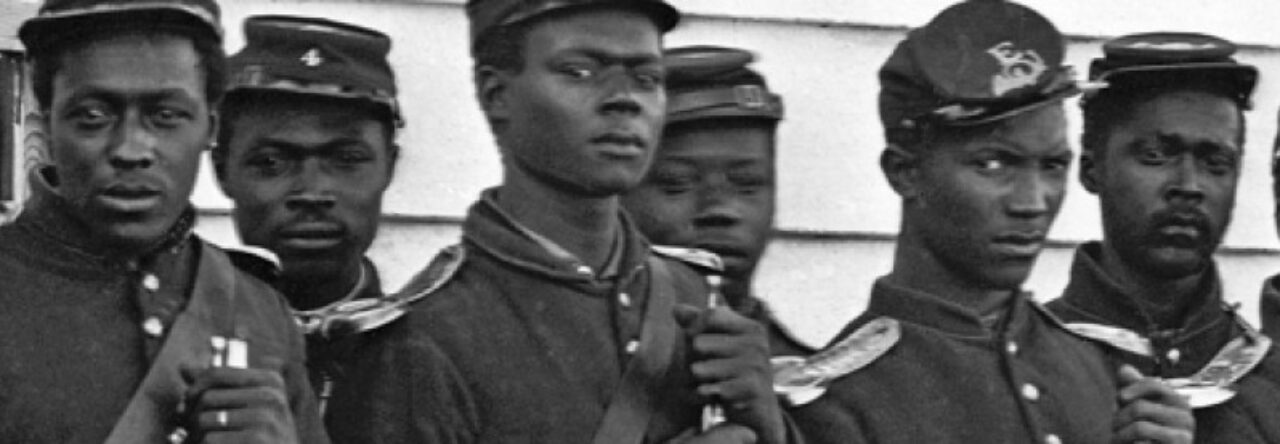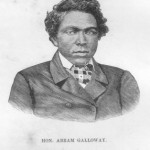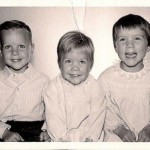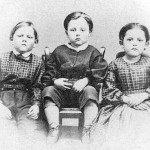Category: Images

The first mural in my room, a beautifully painted eagle breaking the chain to England. In its talons are the Declaration and Constitution. This one is 4 years old. I suggested we paint over it, but the kids fell into an uproar. They had waited 3 years “to get to the painting room.” The murals hold a surprising degree of allure to the younger students. I’m almost out of wall space.

I know the point to our group is to work with technology, but I am too happy with this not to share. I have two murals in my classroom. The first one will be in another post. The mural here is on the east wall of my room, created by last years’ students. It’s 12 feet wide. The main point is the constitutional crisis take on the Civil War. This is how I get at the slavery question. Yes, I considered having the kids add slaves, but human figures are tricky and we decided against. I feel strongly about the House Divided, so they divided Lincoln’s own Springfield house. On the far right is the Gettysburg Address. It’s roughly 5 feet high. We projected the G.A. from an overhead and a steady student traced it with Sharpie. It looks great, even nose-up to it. We did the same with “We the People”, but didn’t even attempt to write more. We all felt the point was made. We tried to find a simple way to show Lincoln, and someone thought of the funeral. As for authenticity, the Lincoln Museum folks sent me a photo of a model of his final funeral carriage… it was a loaner, and WAY too ornate to replicate. Forget it. But someone saw pictures of other presidents’ funerals, particularly Kennedy, and we agreed to what is here. The exaggerated tophat takes care of the Lincoln reference.
…(aka BMI-ster), Guide, Recruiter, Organizer, Political Activist, Firebrand, Military Leader, Crusader for Women’s Rights, Senator… and dead before the age of 34.
Now that is a life!
Abraham Galloway, born enslaved, freed himself and was an important figure in the Union Army during the Civil War. He was an important figure in freed and enslaved African American communities throughout his adult life. And rather than saying he worked for the Union army, it might be more accurate to say he worked with the Union army when and if it suited his needs as a leader of the African American community. (When the community was aggrieved by the actions and behaviors of the Union troops, for example, Galloway took names and kicked… but I digress.)
Illiterate, his story and his voice are hard to trace, but historian David Cecelski of North Carolina got lucky and found a trove of letters written by Mary Ann Starkey of New Bern, NC. Starkey was a close confident and fellow activist who worked with Galloway during the Civil War years.Together with his other sources, Starkey’s letters made possible Cecelski’s forthcoming book on Galloway.
I have used the information from Cecelski’s essay on Galloway in The Waterman’s Song, to make a google map of Galloway’s life. He lived large. Zoom way out right away, so that you can see the whole enchilada – North Carolina to Ontario, Ohio to Massachusetts.
I am only up to the year 1863 tonight. More tomorrow. Meanwhile, here is a preview:
In the next few years after 1963, he:
- Met with Abraham Lincoln as part of a five man delegation agitating for suffrage immediately, if not sooner
- Was elected to the North Carolina legislature as a Senator in 1868
- Worked always for the advancement of freedmen and freedwomen
- Died unexpectedly in 1870; it was estimated that 6,000 to 8,000 people attended his funeral in New Bern.*
*The population of the New Bern NC at that time was 5,000.
Galloway was the man. And then he faded from view.
Cecelski’s book on the life of Abraham Galloway, The Fire of Freedom: Abraham Galloway and the Slaves’ Civil War will be released on September 29th, 2012. ( Or you can pre-order it from Amazon, like I did, and save a few bucks.) I strongly recommend you do, too, because Galloway is a guy we are enriched by meeting.
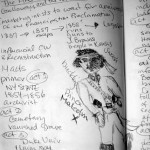 This is the drawing of Abraham Galloway as I imagined him while I listened to David Cecelski introduce him to me, my NEH buddy Kelly Price-Steffen, (Shout out to ya, Kelly!) and the New Bedford Historical Society last summer.
This is the drawing of Abraham Galloway as I imagined him while I listened to David Cecelski introduce him to me, my NEH buddy Kelly Price-Steffen, (Shout out to ya, Kelly!) and the New Bedford Historical Society last summer.
Now I know it is not a good drawing; he defies gravity and looks like he is related to Burt Reynolds, and yet I feel it conveys the swashbuckling element I intended.
The American Journey is a ubiquitous middle school text, and I have used it in Michigan and Washington. This screenshot is from page 423 of the 2005 edition:
As mentioned in today’s wrap-up, students typically perceive the URR as having been “Mississippi to Maine.” What this map shows, however, is that the majority of escapees made their flights from starting points along the boundary with the North.
I occasionally have students who paid attention in 1st through 7th grades, and these are sometimes offended by my attempt to disabuse them of their perception of the URR. They remember “follow the drinking gourd” and “Harriet Tubman,” and only reluctantly let go of their certainty that most escaped slaves traversed hundreds of miles of hostile territory to attain freedom. Close study of the map is a bit of a buzzkill; slaves who simply stepped from Maryland into Pennsylvania don’t make for such exciting stories.
We may not get to it in this course, but another Gilder Lehrman contributor, David Blight, offers his perspective on the mythologies surrounding Americans’ views of the Civil War. He talks, quite eloquently, about the different types of memory associated with it. His take on “emancipationist memory” is a nice corollary to this course. Race and Reunion: The Civil War in American Memory. (also in iTunes University)
My son came home from 1st grade to tell me about a railroad that was dug “under the dirt so the bad people won’t find them,” and “they came up at night to find the drinking gourd and get fresh water.”
We have work to do.
As an elementary teacher in Virginia, the Civil War is primarily taught from the borders of Virginia with very little expanse outside of the state. This proves to be very difficult for students to get a full grasp of the war without at least taking a look at the bigger picture. The second challenge is taking what I’ve often referred to as “dates and dead people” and making it interesting and worth studying to a 10 year old.
I’ve used a similar method as given in the Dred Scott powerpoint by taking a look at images and allowing students to analyze them for what they see. Majority of the images I have used have come from the Mathew Brady collection. I carefully select images that don’t give it away that we’re talking about the Civil War, but just photographs with a variety of items in them that students can identify. First students view the photographs, listing items, people, and the geography they see. Then they share with partners their images and discuss what they believe is happening, where was the picture taken, when and why along with what evidence can they use to support their findings. When students share in small groups they discuss more indepth about what is seen in the photos and can begin to make connections between photographs. It’s fascinating to watch as the students begin to create their own stories behind what they believe is happening and by matching up items or places in the photos they begin to see a bigger picture, the significance and the problems. More photographs are added as the activity continues as if adding more pieces to a puzzle. Eventually I will include images of soldiers which gets those who thought this was a war excited because it’s their personal confirmation. The discussion is rich and questions begin to come out rapidly. Midway through the activity there are about 50 to 75 photographs scattered around the room and students are moving about to view them all. Some students will carry around a favorite to compare with other photos to find a link that they feel will answer the ultimate question – When did this take place and why? More often than not, students eventually can get that this was a major war, there was a lot of destruction and one of my favorite questions is when someone asks… Did they have a choice or were they forced to fight? From there I can begin to introduce letters from soldiers both Union and Confederate and try to uncover the reasons. At this point I’ve officially hooked their interest and have them wanting so much more information that our lessons, both required and extensions, become engaging, interactive and leaving everyone, (myself included) wanting to know more about the Civil War.
Pamplin Park in Petersburg, VA has a museum that inspired me to follow soldiers through the war with my students which is how I got the idea of looking at soldiers letters. James McPherson’s book For Cause & Comrades is going to be an excellent source for future activities. From what I’ve read so far, this book has done what I have been hoping to find in research for a while. The Gilder Lehrman site in both History by Era and Primary Sources will help springboard this very simple activity into a more 21st century style of learning all of which I’m looking forward to using.
